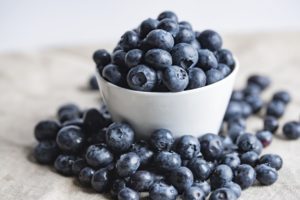The Complete 2020 Guide to DNA Health Testing
A comprehensive look at the genetic health testing industry & its offerings
In this 2020 guide to DNA testing for health, we will show you the results you can expect to find in a DNA health testing program and why they matter.
This comprehensive DNA health testing guidebook looks at measures you can expect to find in one of these DNA tests, the outcomes in the report, and the science that backs them. The measures are then taken a step further by helping you understand why, in fact, you do need to know these genetic facts about your body if you intend to optimize your lifestyle and health.
But first, the negative press surrounding DNA testing is beginning to accumulate, and it is time to address these concerns in full. Below is a roundup of articles that place little value on finding the truth and great emphasis on producing click bait headlines:
- DNA health testing labelled as the “biggest health scam of the decade” by Gizmodo
- DNA fitness results labelled as “$300 junk science” by the Verge
- Genetic testing labelled as a giveaway of “the most valuable thing you own” by NBC News
Before we dive into the measures, let’s debunk some of the major points that critics bring up time and again when discussing the genetic testing industry.
First, consider that DNA tests are not invasive privacy threats
Those who do not “believe in” (or understand) DNA tests tend to label them as scary, invasive tools to steal your identity. Tests where you give away your most intimate data to unknown entities with nefarious purposes. This could not be further from the truth. In fact, if we are concerned with identity theft and privacy, we should be looking to the ‘free’ tools we use on the internet every day. Facebook, Google, to name a couple, receive as much as 99% of their revenue using individual private data. Also, do not forget about that cell phone tracking your sleep, steps, and microphone. If you have privacy concerns, those three should be at the top of your list well before DNA testing.

A smartphone and accompanying apps track many aspects of your personal information.
When you take a standard DNA test, only 0.02% of your total DNA is analyzed. To say that someone could take your full DNA from a genetic testing company and use it against you is patently false. Fear not, the government will not clone you using your DNA.
Many DNA testing privacy complaints are centered around one of two arguments: “DNA tests can be used to track you down if you break the law,” or “DNA testing companies can give law enforcement an edge in tracking you or a relative down who broke the law.” While this is only true for DNA companies that agree to fully comply with all legal inquiries, this is not a bad thing. If you think using DNA family trees to track down the bad guys is bad, then you should take a look in the mirror at what you are hiding. DNA testing is probably not for you. Then again, neither is Facebook, Google, cell phones, or the internet. For the rest of the law-abiding world, at home DNA tests do not invade your privacy or compromise your freedom. Reputable consumer genetic testing companies either provide the option to opt-out of sharing your anonymous DNA data, destroy your saliva sample immediately upon processing, or both. For the rest of us, DNA tests for ancestry, health, nutrition, and fitness are valuable tools to gain insight to a vast amount of information using a non-invasive at home DNA kit.

Where do you place your trust as a consumer?
Second, genetic testing is not a “genetic horoscope” – it is based on science
In the “biggest health scam of the year” article, the author refers to a 2015 Greek meta-analysis of 38 nutrition genes to see if there are any larger correlations between the genetic variants and traits they display. According to the Greek meta study, they did not find any meaningful statistical associations among the existing nutrigenomics studies. The author of the article hopes to discount decades of academic studies into the genetic influence on food metabolism due to one group’s interpretation of the available data. However, upon review, the Greek meta study is not without its limitations. Within each study included in the meta-analysis, one must consider the validity of the experimental design, population studied, study limitations, among other factors. The multiple confounding factors introduced by poorly designed studies will inevitably affect the statistical relevance of these genetic traits and outcomes when considered alongside valid studies used to power DNA health testing programs. Instead, the integrity of each experiment must be considered independently before grouping every available piece of literature together to form a larger hypothesis. Truly, one rotten apple spoils the bunch.

Reputable consumer grade DNA tests use scientifically backed algorithms to produce DNA test results for clients.
Each metric included in a DNA test from a reputable genetic testing provider is not a spin of the wheel to determine a person’s genetic results. As you will see in this guide, each measure included on a DNA test is based in scientific fact with population-scale statistical correlations. Individual study statistical correlations mean that if you have a particular genetic variant, your percent probability of having a physical outcome from that genetic variant is >95%. While the statistical significance of associations varies from study to study, it is a general rule that DNA test result correlations cannot be derived unless the study appears more than once with a statistical likelihood of association stronger than p<0.05 in both or all studies. When you combine the duplicate nature of each individual studies’ outcomes along with their correlation coefficients, the likelihood of having a physical outcome for a particular genetic variant in a DNA test is more along the lines of >99.75%. The only time a DNA test provides a conflicting result that lands in the press is when the scientists behind the genetic analysis misinterpret the gene-physical trait correlation or there is a laboratory user error.

At home DNA testing is not the equivalent of having a genetic horoscope read.
Also, do not forget that reputable at home DNA tests such as those from 23andMe, Ancestry, HealthCodes DNA, and Vitagene, have real scientists with valid credentials, just as those scientists you find in hospitals offering clinical genetic tests to patients. In fact, these at-home direct to consumer (DTC) genetic testing companies typically process their user samples in clinically (CLIA and/or CAP) certified laboratories. Simply put, the at home genetic testing companies are using hospital grade labs and technology, too! Think carefully before you label an at-home genetic test as hocus pocus, while simultaneously (and ironically) defending the genetic testing that is accompanied by genetic counselors in the hospital. These two genetic testing platforms share more similarities than you think.

Direct-to-consumer genetic health tests typically use clinical-grade laboratories, medical advisory boards, and/or trained clinical scientists to develop and interpret DNA test results.
Long story short: DNA test results are determined by actual science, not alignment of the sun, and provide lifelong insight and value. Your DNA health testing results will be no different.
DNA health testing traits & why they matter
Now that we have debunked the conspiracies surrounding DNA testing, let’s dive into some DNA health testing traits to demonstrate, unequivocally, why these traits are of value and worth the investment to learn:
Caffeine sensitivity
What it checks:
Caffeine is the most widely consumed nervous system stimulant in the world. The most common sources of dietary caffeine include naturally occurring sources such as coffee, green tea, black tea, chocolate, and espresso, as well as synthetic sources of caffeine such as sodas and energy drinks. Caffeine’s effects on our body’s health are determined by our DNA. This metric explores the gene in our body that is involved in caffeine breakdown.

Caffeine is the most widely consumed stimulant. An at home genetic test is the simplest way to know if you have a caffeine sensitivity.
Why it matters:
If you have a genetic variant making you sensitive to caffeine intake, and you consume on average more than 190 milligrams (about 2 cups of coffee) daily, you have as much as a 5x increased risk of heart disease. For the record, your coffee “jitters” are not the same as a genetic caffeine sensitivity!
Reference(s): Cornelis et al. Coffee, CYP1A2 genotype and risk of myocardial infarction. Genes Nutr. 2007 Oct; 2(1): 155–156. Palatini P et al. CYP1A2 genotype modifies the association between coffee intake and the risk of hypertension. J Hypertens. 2009 Aug;27(8):1594-601.
Sodium sensitivity
What it checks:
Sodium, a component of common table salt, is a mineral that regulates our blood pressure and volume via fluid balance. Sodium also affects nerve and kidney function. Excessive sodium consumption can lead to elevated blood pressure which can result in heart disease if left unchecked. This metric explores a gene in our body that regulates sodium’s effect on our blood pressure response.

Sodium sensitive individuals should not consume salt in excess of the recommended daily amount, or blood pressure can spike quickly.
Why it matters:
Sodium finds its way into many foods as part of a contemporary instant gratification-driven American diet. Unsuspecting foods can be packed with preservatives and salt. When sodium is consumed in excess of recommended daily amounts for age, gender, and ethnicity, and you have a genetic sodium sensitivity, rapid hypertension ensues. In other words, the rate blood pressure increases due to sodium consumption is greater in individuals with a genetic sodium sensitivity compared to those who do not have the genetic variant.
Reference(s): Hoy MK, Goldman JD, Murayi T, Rhodes DG, Moshfegh AJ. Sodium Intake of the U.S. Population: What We Eat In America, NHANES 2007-2008. Food Surveys Research Group Dietary Data Brief No. 8. October 2011. Poch E1, González D, Giner V, Bragulat E, Coca A, de La Sierra A. Molecular basis of salt sensitivity in human hypertension. Evaluation of renin-angiotensin-aldosterone system gene polymorphisms. Hypertension. 2001 Nov;38(5):1204-9.
Detox ability
What it checks:
In our bodies, removal of cancer-causing free radicals, or detoxification, occurs in the liver. We encounter a variety of toxins daily, some of those from indirect sources such as pollution. However, we also encounter a large proportion of free radicals from toxin-containing substances such as cigarettes, alcohol, and consumption of charred or grilled foods. This metric examines a gene with a variant associated with a greater sensitivity to free radical exposure.

Blueberries are a source of antioxidants used to stave off the effects of a free radical sensitivity.
Why it matters:
In today’s society, free radicals come in numerous forms. With a perpetual exposure to oxidative stress, it is essential to know if you are genetically predisposed to increased free radical sensitivity. By knowing this, you can improve lifestyle choices to offset the pronounced damage from free radical exposure. If this genetic sensitivity is not accounted for, poor lifestyle choices can create an accelerated pathway toward diseases caused in part by environmental genetic mutation, such as cancer.
Reference(s): Vaclavikova et al. Microsomal epoxide hydrolase 1 (EPHX1): Gene, structure, function, and role in human disease. Gene 2015, 571, 1–8.
Lactose intolerance
What it checks:
When lactose is not properly broken down by our bodies, it can cause bloating, cramps and general discomfort. This lactose intolerance occurs because our body does not produce enough of the protein that breaks down lactose into sugars our body can use. This metric explores a gene which regulates our production of the protein responsible for proper lactose metabolism.

For nearly 30 years, dairy products have been a part of a “balanced” diet.
Why it matters:
2-3 servings of cow’s milk, cheese, or yogurt has been a part of the American food pyramid since its inception in 1992. As it turns out, a percentage of the population has been allergic to the sugars found in dairy all these years. The genetic test for lactose intolerance provides an unequivocal awareness of lactose metabolism, which goes a step further in mentally solidifying one’s commitment to stay away from dairy. If you love cheese, for instance, you may be more likely to “excuse” feelings of lactose intolerance if your interpretation is based on feeling rather than scientific fact.
Reference(s): Enattah NS et al. Identification of a variant associated with adult-type hypolactasia. Am J Hum Genet. 2004 Jun;74(6):1102-10. Bersaglieri T et al. Genetic signatures of strong recent positive selection at the lactase gene. Am J Hum Genet. 2004 Jun;74(6):1111-20.
Recovery potential
What it checks:
Proper post-exercise recovery is one of the most important aspects to any successful fitness regimen. Your body’s ability to bounce back from a rigorous exercise is affected by your genetic makeup. This metric examines the genes involved in your recovery and assesses your genetic recovery potential.

With a genetically limited recovery ability, recovery protocols such as stretching become far more essential to proper healing.
Why it matters:
Sustained success in any sport or fitness regimen is centered on one’s ability to bounce back quickly and consistently from rigorous activity. When genetics dictates a reduced recovery rate, it is absolutely essential to put a recovery plan in place that sets the athlete up for longevity and sustainability. Without a specific plan to heal properly from each bout of physical activity, athletes may become demoralized from these setbacks and give up on their sport of choice.
Reference(s): Phillips et al. A dietary supplement attenuates IL-6 and CRP after eccentric exercise in untrained males. Med Sci Sports Exerc. 2003 Dec; 35(12): 2032-7. Ansley et al. Elevated plasma IL-6 levels in trained male triathletes following an acute period of intense interval training. Eur J Appl Physiol. 2007 Mar; 99(4): 353-60. Epub 2006 Dec 13.
Injury risk
What it checks:
Since exercise may involve high-impact motion, additional strain, or resistance, it is important to evaluate injury markers. Based on current research, our injury risk can be assessed for collagen-based body parts, including our Achilles tendon connecting the heel of the foot and the calf muscle. This metric evaluates a gene involved in collagen production and therefore provides you with a risk for collagen-based body part injuries.

Injury likelihood is genetically greater in some individuals than in others.
Why it matters:
Along with recovery rate, injury risk tracks the body’s risk of tendon or ligament injury based on genetics. The combination of poor recovery along with elevated injury risk can spell a short career in exercise if not properly addressed. These factors are further exacerbated by genetic and lifestyle factors that both influence overall body size and mass. By knowing your genetic recovery rate along with injury risk, you are able to devise a plan that seeks to preventatively address your genetic test results. By doing so, you will be able to optimize health through fitness without setbacks for years to come.
Reference(s): September AV et al. Variants within the COL5A1 gene are associated with Achilles tendinopathy in two populations. Brit J Sport Med. 2009; 43:357–365.
Iron Overload Risk
What it checks:
Iron is vital to the function of oxygen-carrying red blood cells and supporting immunity. Some common dietary sources of iron include white beans, spinach, almonds, lean fish and chicken. However, in some individuals, iron absorption rates can be drastically increased by our genes, leading to hemochromatosis. This metric explores genes in our body that affect iron levels and balance and helps us understand if we are at risk for iron overload.

Sources of dietary iron can cause harm in those with hemochromatosis genetic variants.
Why it matters:
Hemochromatosis in the US occurs in 1 in 200-500 individuals. The symptoms of hemochromatosis can be highly nonspecific and difficult for a medical professional to accurately diagnose. Additionally, the symptoms from hemochromatosis typically do not present until the later adult years. It is therefore essential to diagnose this genetic disease as early as possible in order to create a suitable lifestyle plan for sustained health and wellness.
Reference(s): Pichler I et al. Identification of a common variant in the TFR2 gene implicated in the physiological regulation of serum iron levels. Human Molecular Genetics. 2011; 15:1232-40.
Keep in mind that the comprehensive DNA health testing package offered by HealthCodes DNA includes 40 total health insights, lifetime access to personalized diet and exercise technology, and unlimited user health consultations.
To conclude
In 1597, Sir Francis Bacon penned the Latin phrase ipsa scientia potestas est in Meditationes Sacrae. Directly translated, this Latin phrase means “knowledge itself is power,” or more commonly, “knowledge is power.” At home genetic testing exists today because of the human need to know. Whether the DNA test is designed for ancestry, health, diet, or exercise, the primary goal remains the same: to empower users with knowledge. Knowledge about themselves to improve health, knowledge about their families to better understand their place in the world and re-connect with lost loved ones; for every person, knowledge is power.

Knowledge is power. DNA tests provide more knowledge about yourself.
There is nothing that is scam-oriented about reputable genetic testing organizations empowering millions of individuals with their genetic testing products on the market today. For 2020 and beyond, people will continue to discover a wide array of genetic testing insights available at the click of a button. The genetic testing industry will continue to thrive and evolve into the best form of itself, its users along with it.
This opinion piece was made possible by the contributions of multiple authors and resources. Information provided here shall not be used to diagnose, treat, or prevent any disease. This article is not a substitute for medical care. To inquire further, please reach HealthCodes DNA’s editorial staff at info@healthcodesdna.com.
